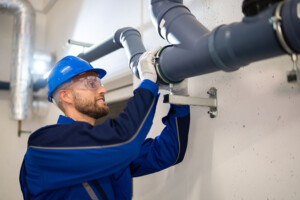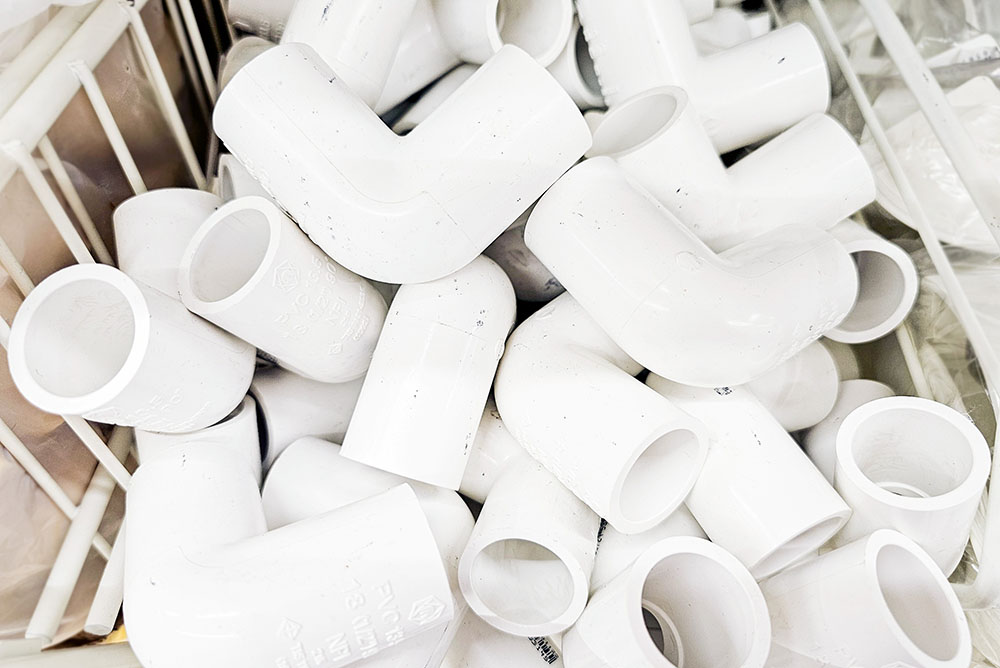This website uses cookies so that we can provide you with the best user experience possible. Cookie information is stored in your browser and performs functions such as recognising you when you return to our website and helping our team to understand which sections of the website you find most interesting and useful.
News
Is PVC Safe for Drinking Water? The Truth About PVC Pipes
There’s a frequently debated topic in water infrastructure: Are PVC pipes safe for delivering drinking water?
The answer is yes — It’s the key takeaway from 70 years of proven safety performance of poly vinyl chloride (PVC) use in water and sewer systems. In other words, PVC meets stringent safety standards for human health, as well as being cost-effective and durable material for delivering water.
What Is PVC and How It’s Used
Polyvinyl chloride (PVC) has a wide range of applications in construction, healthcare, and water delivery systems. Its appeal lies in its durability, affordability, and resistance to corrosion. PVC pipes don’t rust, scale, or corrode, making them ideal for modern infrastructure.
There are different types of PVC, but the one used for drinking water—unplasticized PVC or uPVC—contains no harmful plasticizers. Therefore, it has both a stable and non-toxic nature.
The Role of PVC in Safe Water Distribution
PVC plays a crucial role in ensuring clean drinking water reaches communities. Municipal and residential water pipes use PVC to transport potable water without compromising safety.
The use of PVC water lines is common in large-scale water infrastructure projects because of their durability, chemical resistance, and long lifespan. As these pipes require little maintenance, utilities can manage costs while still providing safe drinking water to the public.
Addressing Safety Concerns
PVC pipes have faced misconceptions regarding their safety. Here are the key concerns, and the facts that dispel them:
PVC Pipes are Prone to Chemical Leaching
PVC pipes were long known to leach toxic chemicals into drinking water. However, modern PVC pipes have been extensively tested and certified to comply with NSF/ANSI 61 standards since 1989.
National Sanitation Foundation (NSF) is an independent, non-profit organization dedicated to improving human and planet health, which includes regulating materials in contact with drinking water.
PVC Pipes Risks Chlorine and Vinyl Chloride Exposure
Chlorine is used in the production of PVC. However, finished PVC pipes don’t release chlorine or vinyl chloride into water. They are rigorously manufactured to ensure they are free of residual compounds before being approved for use.
PVC Pipes are Brittle and Lack Longevity
This might be true back in the day, but today’s uPVC pipes are engineered for high performance. In fact, they’re now capable of lasting 50 to 100 years (or beyond) with minimal degradation.
Understanding PVC Regulatory Oversight and Safety Standards
PVC pipes used for drinking water must meet strict health and environmental regulations worldwide.
Key organizations that certify PVC’s safety include:
- NSF International (NSF/ANSI 61 certification) to prevent contaminants from entering drinking water.
- Environmental Protection Agency (EPA) to set standards for safe drinking water in the U.S.
- World Health Organization (WHO) to develop guidelines for drinking water safety.
- American Water Works Association (AWWA) to develop standards for water supply infrastructure, including PVC pipes.
- European Chemicals Agency (ECHA) to ensure chemical safety in PVC production and usage.
Across the globe, municipalities and utility companies rely on PVC to deliver clean, potable water.

Why Use PVC in Drinking Water Systems?
Beyond safety, there are multiple reasons to choose PVC for water infrastructure.
The energy required to produce PVC is significantly lower than that of other piping materials. The fact that PVC pipes are recyclable also contributes to sustainability initiatives.
PVC installation is more affordable compared to traditional materials like copper or galvanized steel. Since water PVC pipes are lightweight and easy to install, it comes with lower labor costs and time.
Since PVC doesn’t corrode, here’s no need to worry about contamination risks and maintenance costs.
Studies also show that PVC plastic pipes build up less biofilm, an important factor in preventing bacterial growth.
Lastly, due to tight-sealing joints, modern PVC pipes for water use reduce the risk of leaks and water loss.
Environmental Impact and Health Considerations
Some critics argue that PVC production has environmental drawbacks. However, advancements in PVC recycling and sustainable manufacturing have significantly reduced its environmental footprint.
Governments and industry leaders continue to support its use in modern infrastructure due to its proven safety and efficiency.
PVC pipes have a lower life cycle impact than alternative materials, especially when considering energy efficiency and resource conservation.
Additionally, PVC water lines can withstand extreme weather conditions, ensuring reliable water supply in even the most challenging environments.
Comparing PVC to Other Water Pipe Materials
PVC is frequently compared to other piping materials. Here are some reasons this material is better than the alternatives
PVC vs. Copper
Copper pipes can corrode and leach metal into the water supply, whereas PVC water pipes remain inert and resistant to corrosion.
PVC vs. Galvanized Steel
Steel pipes are prone to rust and scale buildup, which can affect water quality. PVC remains smooth and free of buildup, preserving water flow and quality.
PVC vs. PEX
PEX is flexible and easy to install. However, it’s more susceptible to UV degradation than PVC pipes. The latter helps ensure water remains stable even in outdoor settings.
PVC is a Safe and Smart Choice
PVC is a reliable, cost-effective, and sustainable choice for water delivery systems. Testing, regulatory approval, and real-world applications retain PVC’s place in modern water infrastructure.
The next time someone raises concerns about PVC safety, you can confidently point to the data. PVC water pipes are here to stay—safely delivering clean water for generations to come.


